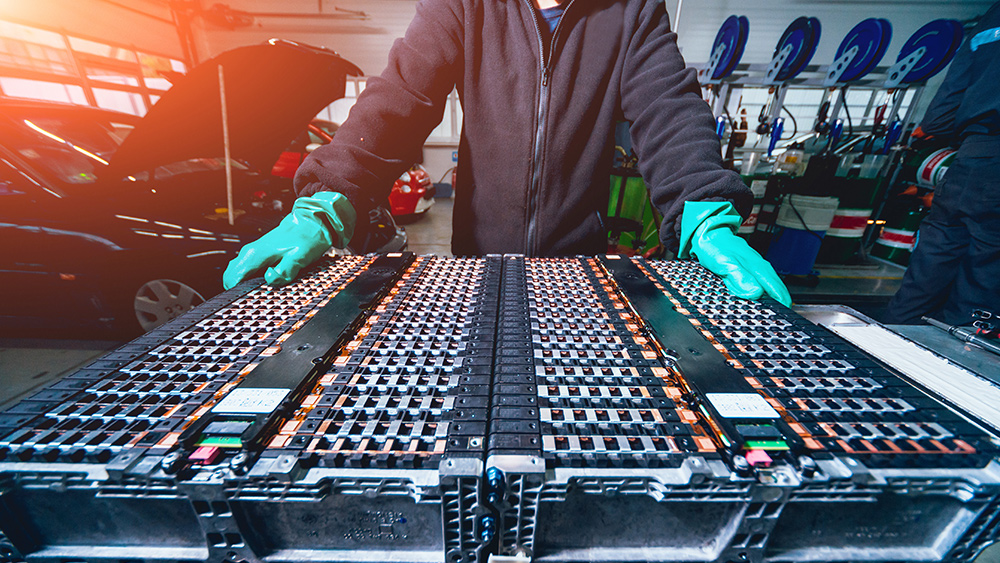Samsung develops new solid-state battery using SILVER as major component, will nearly double energy storage density and cause global surge in silver demand
08/25/2024 / By Kevin Hughes

Samsung has developed a new solid-state (SS) battery using silver as a major component. A solid-state battery is an electrical battery that uses a solid electrolyte for ionic conductions between the electrodes, instead of the liquid or gel polymer electrolytes.
This means the demand for silver is likely to increase soon.
“The key drivers that will ramp up demand for EVs are range, charge time, battery life and safety. Samsung’s new solid-state battery technology, incorporating a silver-carbon (Ag-C) composite layer for the anode, exemplifies this advancement,” said retired investment professional Kevin Bambrough. (Related: Solid state battery breakthrough could be a total game-changer for electric vehicles.)
Silver has exceptional electrical conductivity and stability
Silver’s exceptional electrical conductivity and stability are leveraged to enhance battery performance and durability, achieving amazing benchmarks like a 600-mile range and a 20-year lifespan and nine-minute charge.
Bambrough mentioned that while official figures are presently unavailable, the estimates show that there could be as much as five grams of silver per cell in Samsung’s solid-state batteries which means “a typical EV battery pack containing around 200 cells for a 100kWh capacity could require about one kilogram of silver per vehicle.”
“With global car production standing at about 80 million vehicles per year, if 20 percent of these vehicles (16 million EVs) were to adopt Samsung’s solid-state batteries, the annual demand for silver would be around 16,000 metric tons,” Bambrough noted.
“This would represent a significant portion of the current global silver production, which is approximately 25,000 metric tons annually, highlighting the substantial impact on the silver market.”
This presents a bullish trajectory for silver. Bambrough noted that silver is already in a deficit with industrial demand from the solar industry driving total yearly consumption ahead of supply.
“For me, it’s just another reason to expect silver markets to tighten up [further] and the price of silver to take a run at its all-time inflation-adjusted high [of] $200/oz will likely be seen in the [coming] 10-15 years,” Bambrough said.
“All we need to do is look back at the silver chart of the 1970s to see how explosive the precious metal can move skyward when a true shortage develops and speculators decide to hoard,” he said. “My bet is … we will hoard.”
Ride Apart’s Enrico Punsalang reported that Samsung is already working with large automakers to include its SS battery technology in EVs.
The company has signed an agreement with Toyota to start mass production of SS batteries in 2027, with Lexus vehicles expected to be among the first to incorporate the latest technology.
Punsalang said the real challenge would be how quickly ultrafast charging infrastructure can be made available to the public. He also noted the cost issue, saying “the cost to manufacture solid-state EV batteries is around three or four times higher than lithium-ion and LFP [lithium iron phosphate] batteries found in current EVs.”
Follow FutureScienceNews.com for more stories about the latest developments in science and technology.
Watch the video below to know more about solid-state battery.
This video is from the High Hopes channel on Brighteon.com.
More related stories:
Sources include:
Submit a correction >>
Tagged Under:
auto industry, automakers, batteries, break through, breakthrough, China, electric vehicles, Energy Storage, EV, future science, future tech, Glitch, gold, gold report, inventions, Lexus, lithium ion, metals, money supply, robo cars, Samsung, silver, solar industry, solid state battery, Toyota
This article may contain statements that reflect the opinion of the author
RECENT NEWS & ARTICLES
COPYRIGHT © 2018 BREAKTHROUGH.NEWS
All content posted on this site is protected under Free Speech. Breakthrough.news is not responsible for content written by contributing authors. The information on this site is provided for educational and entertainment purposes only. It is not intended as a substitute for professional advice of any kind. Breakthrough.news assumes no responsibility for the use or misuse of this material. All trademarks, registered trademarks and service marks mentioned on this site are the property of their respective owners.




















